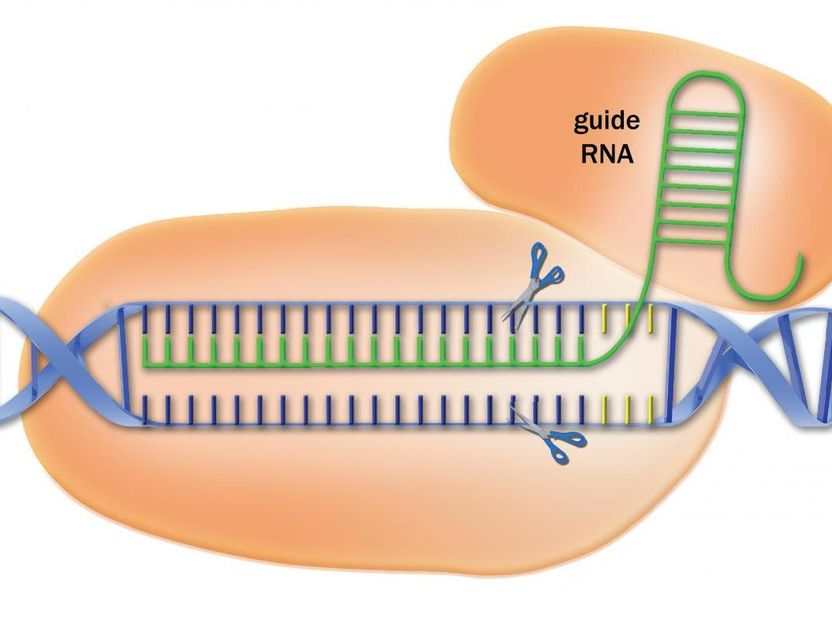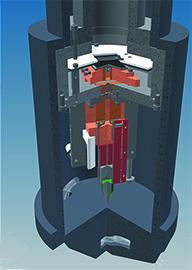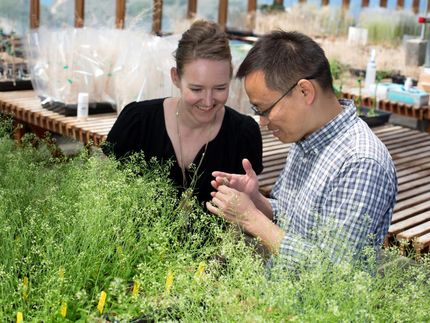Library of CRISPR targeting sequences increases power of the gene-editing method
CRISPR, the gene-editing technology that has taken biology by storm, is now more powerful than ever. Scientists have assembled a library of RNA sequences that can be used by researchers to direct the CRISPR-cas9 complex to cut DNA with exquisite, unprecedented precision.

CRISPR-Cas9 is a reprogrammable DNA cutting machine that is being used to edit genomes in many organisms for research purposes. Its primary component, the Cas9 enzyme (orange), cuts genomic DNA (blue). The enzyme is directed to its target--essentially any sequence along the genome--by hitching it to a strand of guide RNA (green) whose sequence is complementary to that of the DNA target. Upon finding and pairing with it, Cas9 snips out the target segment. It can either be deleted or replaced with another DNA sequence (not shown here). A new resource published by Hannon and colleagues provides a library of guide sequences that significantly increases CRISPR's specificity, while limiting off-target effects. The platform also facilitates multiplexing and combinatorial targeting.
Advanced Analytical Technologies
Among other advantages, the new tool greatly increases the likelihood that a CRISPR "cut" (or series of related cuts) will have the functional impact that researchers intend. Disabling or deleting a gene or set of genes is much more certain to succeed fully with the new resource, minimizing the likelihood of "off-target" effects that can diminish the relevance of otherwise carefully planned and executed experiments.
"We've combined a machine learning approach with other strategies to optimize knock-out efficiency," says Professor Greg Hannon of Cancer Research UK Cambridge Institute, who led a team that included Drs. Simon Knott and Nicolas Erard. All three performed some of the research while at Cold Spring Harbor Laboratory (CSHL) prior to Dr. Hannon's move to the UK two years ago. Hannon, who is a CSHL adjunct professor, notes that the CRISPR library also facilitates multiplexing of experiments, as well as combinatorial targeting.
Original publication
Other news from the department science

Get the life science industry in your inbox
By submitting this form you agree that LUMITOS AG will send you the newsletter(s) selected above by email. Your data will not be passed on to third parties. Your data will be stored and processed in accordance with our data protection regulations. LUMITOS may contact you by email for the purpose of advertising or market and opinion surveys. You can revoke your consent at any time without giving reasons to LUMITOS AG, Ernst-Augustin-Str. 2, 12489 Berlin, Germany or by e-mail at revoke@lumitos.com with effect for the future. In addition, each email contains a link to unsubscribe from the corresponding newsletter.
Most read news
More news from our other portals
Last viewed contents
Amoxicillin
Cochlear_implant
Diazepam
Biotelemetry
Natalizumab
Pseudolarix



















































